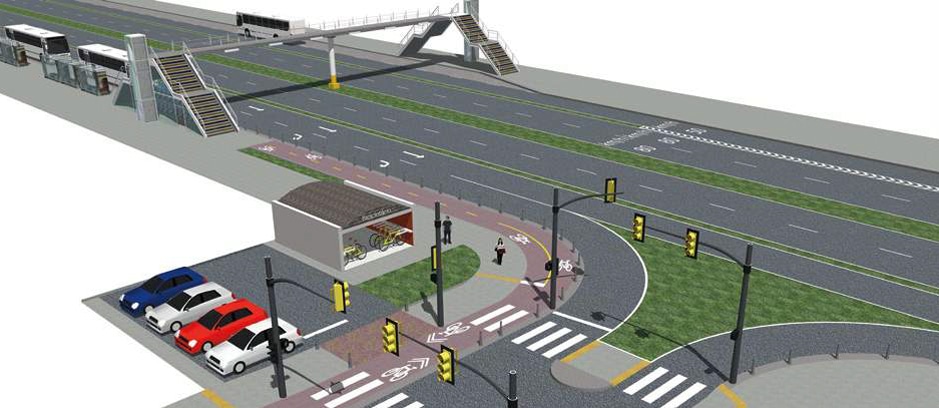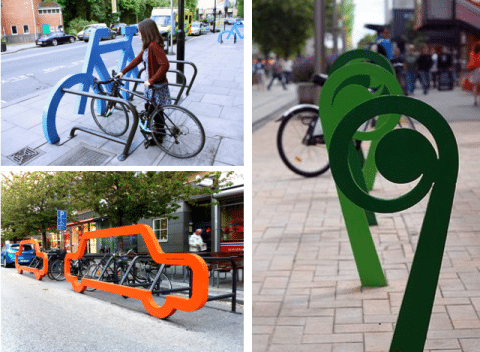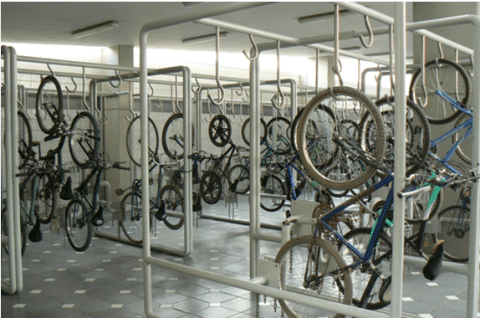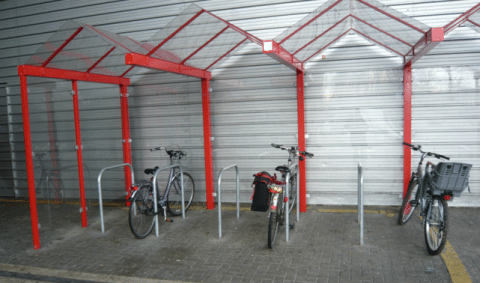Lesson
Part of: Design Principles of Cycling [Draft Version]
BOOKMARK
Bicycle parking facilities are welcome in public areas and any location where people travel. For example, transportation terminals, commercial buildings, schools, universities, residential areas, hospitals, shopping centers, and grocery stores receive large volumes of people. Individuals would be better able to access these destinations by bicycle if they had high-quality, abundant and affordable parking.
Adequate bike parking should be:
- Provided in line with demand
- Noticeable from a distance
- Accompanied with signs to guide cyclists
- Accessible directly
- Free from steep ramps, stairs or doors

Types of Bike Parking:
- Short-term parking: Short-term bicycle parking facilities are typically used for two hours or less. These facilities are required near commercial establishments, for use by visitors to commercial buildings and parks. They provide ample street parking for bikes to increase cyclist confidence in the network and promote cycling.

- Long-term parking: Long-term parking facilities must provide a space with a higher degree of security than regular bike racks, allowing cyclists to leave their bikes for the entire day, overnight or for even longer periods. These parking areas can be monitored by a 24-hour attendant and provide parking for 50 bicycles or more.


Examples of long-term parking. Left: Biciestacionamiento Massa, Transmilenio. Photo by This Big City; Right: Slovenia. Photo by Richard Drdul.